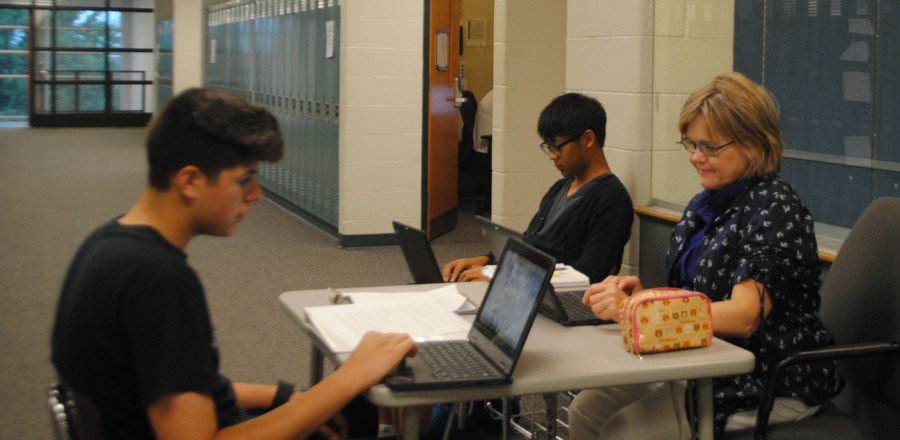Top Five Ways Teachers Utilize Chromebooks
- Video peer editing
Mr. Smith, a freshman English teacher, uses the Chromebooks in his classes for peer editing outside of class. By using the video chat method of peer editing, it eliminates using Google comments.
“Frequently kids give comments like ‘good job,’ that are not really great,” Mr. Smith said. “But for some reason, when they have the paper sitting there and the video running, they would say things like ‘I think you need a little more in your introduction.’”
Students are assigned these video chat sessions to do at home. This avoids everyone speaking at once in the classroom and creates a more private environment for the peer editing process.
- Monitoring students’ understanding of a topic
Math teacher Mr. Pardun uses the Chromebooks to direct students onto websites like Socrative and Peardeck. These websites help him to monitor students’ understanding of topics.
“[These] websites allow me to poll the class and then anonymously share those results,” said Mr. Pardun. “I can see where my class is at as a group, and the students can see where they rank individually compared to their peers.”
By using these websites in class, Pardun is able to see what learning targets his students seem to struggle with and emphasize those topics; this helps students with what they need further assistance on vs. things they already understand.
- Encouraging students to write in more detail
Social studies teacher, Ms. Carroll, used to require composition notebooks for her students’ journal entries. However, this year, she is using the Chromebooks to have students fill out prompts through Google forms. She is finding that the entries and overall student reactions are better than usual.
“I think [the students] really like it and are even typing more detailed responses,” said Ms. Carroll
Having students type their responses on their Chromebooks has led to a higher quality of writing in Ms. Carroll’s classes, and has encouraged the students to write more.
- Help students’ health
In Ms. Moeller’s physical education classes, she uses the Chromebooks to assign her students videos so they can be informed of the new curriculum changes. By watching these videos at home, it saves time by not having to teach kids about these new activities (such as the new way to perform the sit-up test), which gives them more time to exercise in class.
“I think having assignments in P.E. is probably something that is not the most exciting for [the students],” said Ms. Moeller, “but I try to tell my students that your health is the most important thing. If you don’t have health, you’re not going to be able to do the math problems, you’re not going to be able to do your reading, you’re not going to be able to do anything.”
- Review
Mr. “Profe” Wilson uses review websites in his Spanish classes; for example, “conjuguemos” allows students to conjugate verbs. Through this site, students can conjugate verbs as fast as they can to try to improve their overall high score and ultimately improve their conjugation skills. Mr. Wilson keeps a leaderboard in his classroom, which creates some friendly competition amongst his students.
“This is interactive and competitive, but really the students really enjoy it,” said Mr. Wilson.
By creating a fun environment while learning with the Chromebooks, students can enjoy it more than usual, which helps them remember what they’re learning.

